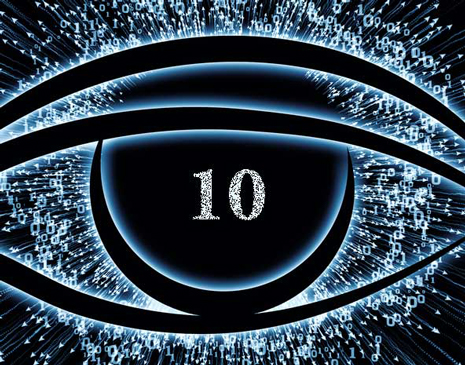Welcome to The 10 Lenses
 The 10 Lenses is a breakthrough, research-based framework that illuminates how people view race, ethnicity and cultural identity differences through 10 distinct “lenses.” We all too often find ourselves polarized by issues related to race, ethnicity and national origin, social class, sexual identity and regional differences. Identity differences can seem like impenetrable barriers to communication and can be frustratingly difficult.
The 10 Lenses is a breakthrough, research-based framework that illuminates how people view race, ethnicity and cultural identity differences through 10 distinct “lenses.” We all too often find ourselves polarized by issues related to race, ethnicity and national origin, social class, sexual identity and regional differences. Identity differences can seem like impenetrable barriers to communication and can be frustratingly difficult.
The 10 Lenses offers a new way of thinking and talking about cultural differences that can help us in this increasingly fragmented and polarized environment. Created by bestselling business author and thought leader Mark Williams, The 10 Lenses will enhance everyone’s ability and willingness to contribute to personal and organizational learning. The Lenses are a powerful diagnostic tool because once they are clearly identified, they play out through patterns of behavior that are predictive.
- The Lenses open minds and reduce defensiveness. Each of the Lenses contributes something valuable to society. Only when we fall into the weaknesses or conflicts of the Lenses do we get into trouble.
- The Lenses enable people – regardless of their level of education, role within their organization, or status within their community – to explore the underlying beliefs and values that drive cultural tensions in a safe and enjoyable environment.
- The Lenses create a bridge between competing beliefs that allow people to talk openly and honestly about who they are, why they see the world the way they do, and how we can take steps together to connect and collaborate to build inclusive communities.
“A brilliantly innovative approach to make conscious what is often implicit in the dialog on diversity.” – Dr. Philip J. Stone, Harvard University
10 Lenses Questions and Answers
How Were the Lenses Discovered?
After more than fifteen years of qualitative and quantitative research, Mark Williams was able to recognize and document ten perspectives and classify them into ten patterns of thought and behavior. Those patterns were identified in books, newspapers, movies, political speeches, organizational policies, societal norms, policy perspectives, and everyday interactions.
Where Has The 10 Lenses Been Used?
The 10 Lenses has been used at Global 500 corporations, communities, institutions of higher education, local and federal government, industry conferences, and at secondary schools with faculty and students. The 10 Lenses has been successful from the C-Suite to the mailroom because it speaks to everyone in a compelling manner.
Has The 10 Lenses Been Validated?
Yes, the Gallup Organization created a survey to help determine dominant lenses and the combination of lenses through which we filter perceptions. The study also concluded that the Lenses could withstand statistical analysis. Data were collected first from 318 Gallup Organization employees, then from 45 Harvard Medical School staff members, and two national samples – one that consisted of 1,001 participants and another of over 4,000 participants. The conclusion: The Lenses do exist as modes of thought, feeling, and behavior in the general population.
Are Some Lenses Good or Bad?
No. Each of the Lenses has inherent strengths and weaknesses. The challenge is that when you become locked into a particular lens or several lenses, the door to understanding and effective action closes. The concept of a Lens is not designed to lock you into a category; nor is it intended to tell you or others if you are racist, sexist, homophobic, patriotic, lazy, prejudiced, biased, good, or bad. Instead, its purpose is to help you identify the range of thought and behavior patterns that you and others exhibit and the impact of those behaviors on communication and accomplishing goals.
Are the Lenses Mutually Exclusive?
No. The Lenses are not mutually exclusive. You probably identify one Lens you use above others. You will likely have a preference for three Lenses, depending on the specific situation or the dimension of identity that is relevant. For example, you may be an Integrationist on race and a Seclusionist on sexual identity.
Can The 10 Lenses be used to Understand Differences In Addition to Race, Ethnicity, and Culture?
Yes, the Lenses can be used to understand the thought patterns related to how one frames their beliefs about any group of people based on identity. The fundamental principle of the Lenses is useful as they relate to gender, religion, region, social class, nationality, education and sexual identity.
